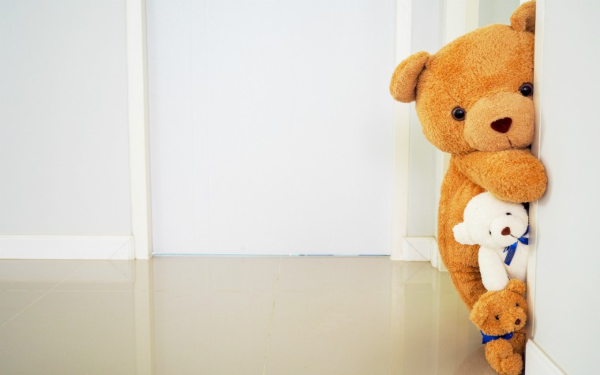
 This article presents a few key pieces of advice for working with children and young people who tell you they are witnessing or experiencing domestic abuse. They are taken from Community Care Inform Children’s guide, ‘Domestic abuse: the impact on children and young people’. The full guide explores the ways in which children can experience emotional harm as a result of living in a household where domestic abuse is taking place, and the impact that domestic abuse can have on the relationship with the non-abusive parent. The guide also provides questions to consider when assessing a child’s safety and explores how to make safety plans. Community Care Inform children subscribers can access the full guide here.
This article presents a few key pieces of advice for working with children and young people who tell you they are witnessing or experiencing domestic abuse. They are taken from Community Care Inform Children’s guide, ‘Domestic abuse: the impact on children and young people’. The full guide explores the ways in which children can experience emotional harm as a result of living in a household where domestic abuse is taking place, and the impact that domestic abuse can have on the relationship with the non-abusive parent. The guide also provides questions to consider when assessing a child’s safety and explores how to make safety plans. Community Care Inform children subscribers can access the full guide here.
The guide was written by Joanna Sharpen, a qualified youth worker, consultant and trainer specialising in violence against women and girls and trauma, who has written national guidance for the Home Office on reducing harm to children affected by domestic abuse.
The three-step approach: receive, reassure, respond
Any disclosure of domestic abuse should be treated seriously and as a potential child protection concern, with appropriate steps taken, as with any other form of abuse.
The three-step approach described below provides some simple practice tips for how to respond if a child or young person tells you about domestic abuse in their family.
Practice point
Before you meet a family, ask yourself what you know about them already and what gaps there are in your knowledge. What kinds of questions can you ask to find out what is really going on?
Step one: receive
- Listen calmly; do not look shocked or disbelieving.
- Do not be judgmental.
- Take what they are saying seriously and believe them.
- Don’t make the child feel bad – for example, by saying something like: “You should have told me earlier.”
Step two: reassure
- Stay calm; tell them that they have done the right thing in telling you.
- Acknowledge how hard it must have been to tell you.
- Tell them that they are not to blame.
- Empathise – but don’t tell them how they should be feeling.
- Don’t promise confidentiality – explain that only those that need to know will be told.
- Be honest about what you can and can’t do.
Step three: respond
- Don’t interrogate – let them tell you as far as possible.
- Record the date and time and any information given to you.
- Always use the words said to you; never interpret what was said or put it in your own words (this information could be used as evidence).
- Make a note of any injuries you have seen or been shown; this is very important as bruises, cuts, marks etc tend to heal, and this could be used as evidence.
- Record what you did next and with whom you shared the information – ensure that this is all in line with your local policies and procedures.
- Don’t criticise the abuser – the child or young person may have feelings for him or her; remember, abuse often happens by someone known and trusted by the child or young person.
- Try to follow things through yourself so the child doesn’t need to repeat their story to other staff – again, only if this is in line with your child protection policy and procedure.
- Explain what will happen next, including who may want to speak to the child/young person further. If it is safe, the non-abusing parent or carer might also be informed (but always take great care where there is domestic abuse); the police might also be informed.
Practice point
When talking to the non-abusive parent, it can help to ask:
- Do you think your partner/ex-partner will seriously injure you or the children? Why do you think that?
- When were you were most frightened or injured by them?
- Are things getting worse? Describe the pattern of the abuse (frequency, type, severity, escalation).
It is also useful to discuss any protective strategies that the parent or children may have used in the past. Try to recognise and highlight the strengths that someone has already used to protect themselves and their children. Instead of asking “why don’t you leave?”, ask why they stay. This can help you build a picture of risks and barriers to leaving, keeping in mind that in the first year after leaving a relationship, women can be most at risk.
The full guide to supporting children and young people experiencing domestic abuse includes more questions to consider during assessment, and in-depth information on safety planning, as well as signposting to various resources for victims and families. If you have a Community Care Inform Children licence, log on to see the full guide and read more detailed information






 Family help: one local authority’s experience of the model
Family help: one local authority’s experience of the model  ‘I spent the first three months listening’: how supportive leadership can transform children’s services
‘I spent the first three months listening’: how supportive leadership can transform children’s services  How senior leaders in one authority maintain a culture of excellence
How senior leaders in one authority maintain a culture of excellence  How staff support ensures fantastic outcomes for children and families
How staff support ensures fantastic outcomes for children and families  Workforce Insights – showcasing a selection of the sector’s top recruiters
Workforce Insights – showcasing a selection of the sector’s top recruiters 

 Facebook
Facebook X
X LinkedIn
LinkedIn Instagram
Instagram
Comments are closed.